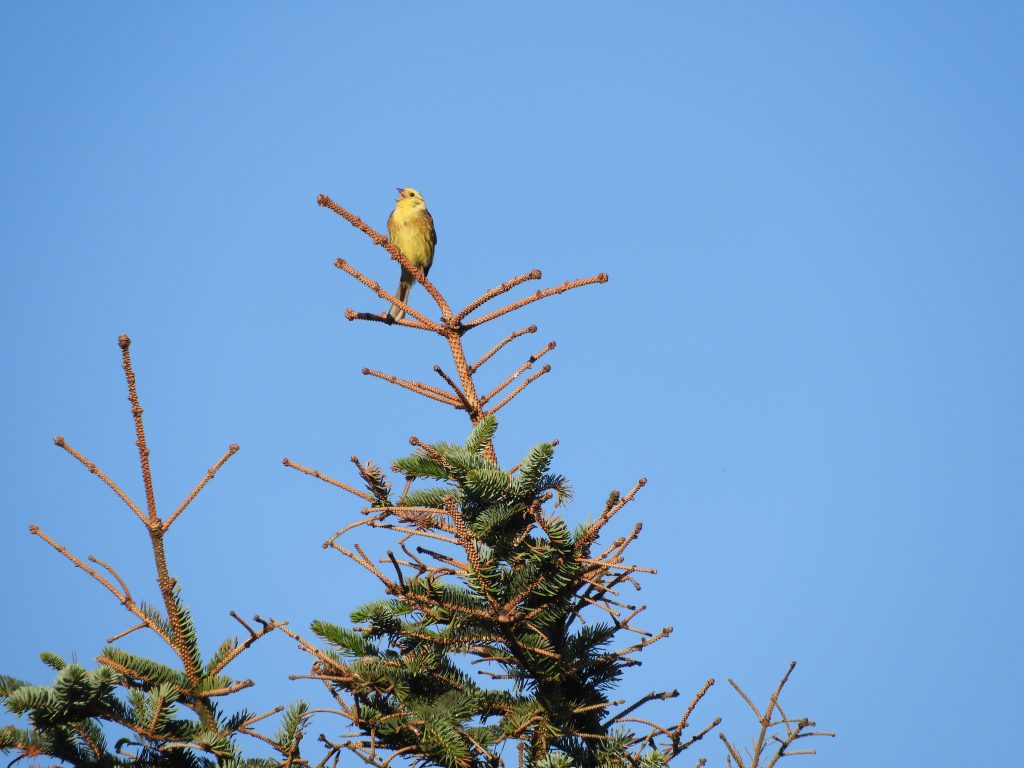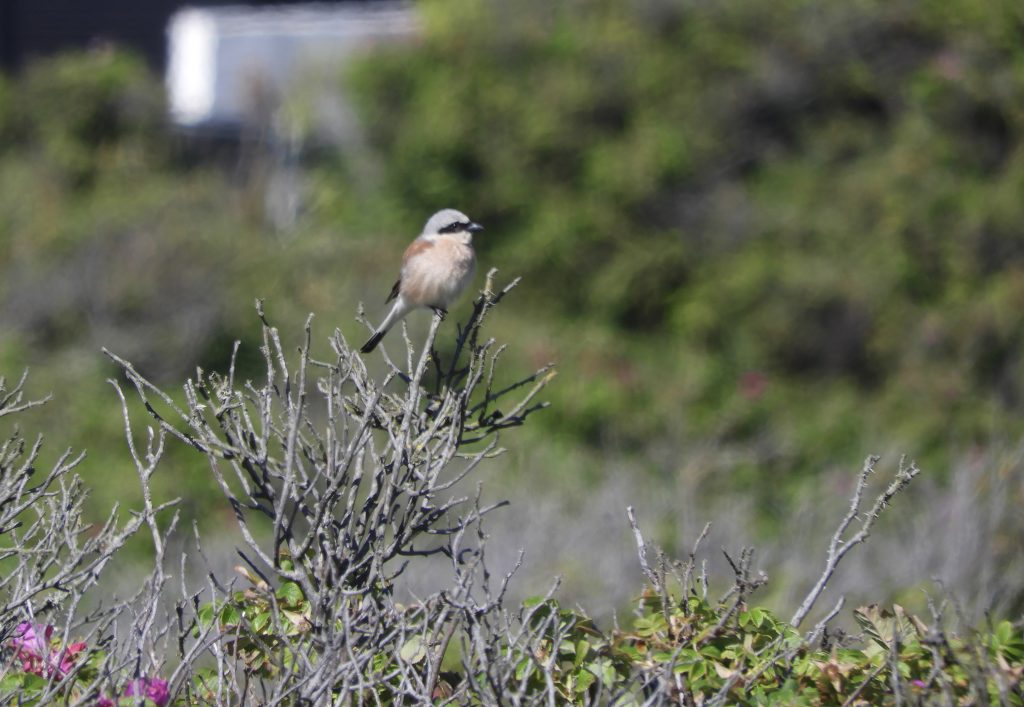
July 8 2024 Lokken, Denmark. After a few days in Copenhagen where, as far as bird life goes, Magpies rule, we’ve made our way to the west coast of Denmark, to a modest and rather minimalist summerhouse semi-hidden among grassy dunes. The dunes here are huge, looming like old apartment blocks and dotted in the valleys with many such holiday homes, and all within walking distance of the sandy beach. It’s a deservedly popular beach for it is wide, clean and slopes ever-so-gently seawards. And it’s worth noting that the sand comprising the beach and structure of the dunes is silky fine and a treat to walk barefoot on.
In contemplating this trip I had assumed that Danish bird life in July would be much like the England where I grew up, and had discounted the chances of seeing anything much out of the ordinary. Yet on our 4-hour drive here (four hours including a ferry ride will get you across Denmark quite easily it seems) I was happy to note a large flock of Northern Lapwings gathered in a wide river-edge field, and a soaring White-tailed Eagle. Things were looking up.
We had hardly arrived at our summerhouse, in those early minutes before the car is fully unloaded but when you sit for a head-settling breather, when I heard a birdsong that I knew instantly, a vivid memory from my youth, a Yellowhammer.

Yellowhammers are a largeish bunting, bright yellow in parts and typically a bird of dry, scrubby fields and heath, it certainly belongs here. Yellowhammers are globally abundant but have become scarce in Ireland and the UK, where it is considered a species of concern, all the more reason for my delight at hearing and then seeing one for the first time since my mid-teens. As is often the case with wildlife, folklore and country wisdom shape public understanding and appreciation. The Yellowhammmer’s song is described anthropomorphically as “a-little-bit-of-bread-and-no-cheeeeze”. A bit of a stretch perhaps; although it was that little piece of old wisdom that brought it back to me. Less prosaically its song is a series of five or six small dry notes ending with a long wheezy exhale.
Thrilling it was. To me anyway. When I drew my family’s attention to it and all that goes with it, just two or three grunts showed they were not really on the same page.
There was more to be seen and heard. Greater Whitethroats were quite common in the shrubby dunes and males (presumably) restlessly patrolled their territories burbling as they go, Eurasian Linnets too and even a Red-backed Shrike showed itself for a while. It was a lifer for me and a bit of a thrill, but I was so smitten by the Yellowhammer I let it go.

Cool! Thanks for sharing and welcome back!